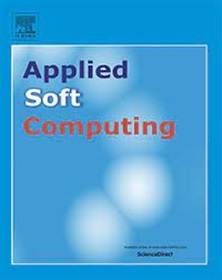Deep domain-adversarial anomaly detection with partial gradient reversal
IF 6.6
1区 计算机科学
Q1 COMPUTER SCIENCE, ARTIFICIAL INTELLIGENCE
引用次数: 0
Abstract
In industrial settings, outliers can significantly affect equipment stability and potentially jeopardize system’s regular operation and performance. Especially when confronted with new equipment or operating conditions, it becomes imperative to establish a precise model with a limited dataset to swiftly and accurately detect and manage outliers. To tackle this issue, we introduce a transfer learning-based approach aimed at quickly adapting to novel environments and constructing efficient anomaly detection models. This strategy merges transfer learning with conventional anomaly detection techniques to create resilient models within a weakly supervised framework. In contrast to conventional methods disregarding unknown outliers, our approach incorporates a Gradient Partial Reversal technique, employing a domain adversarial mechanism to gently segregate outliers at a distinct level from the anomaly detection algorithms. This strategy yields training outcomes comparable to supervised models. To validate the efficacy of our model, we conducted experiments across three scenarios: digit image detection (utilizing the MNIST and USPS datasets), object recognition (employing the Office–Home dataset), and rolling bearing anomaly detection. Our results show that the proposed algorithm significantly outperforms existing state-of-the-art methods in terms of detection accuracy and robustness.
基于部分梯度反转的深度域对抗异常检测
在工业环境中,异常值会严重影响设备的稳定性,并可能危及系统的正常运行和性能。特别是当面对新的设备或操作条件时,建立一个具有有限数据集的精确模型以快速准确地检测和管理异常值变得势在必行。为了解决这个问题,我们引入了一种基于迁移学习的方法,旨在快速适应新的环境并构建高效的异常检测模型。该策略将迁移学习与传统的异常检测技术相结合,在弱监督框架内创建弹性模型。与忽略未知异常值的传统方法相比,我们的方法结合了梯度部分反转技术,采用域对抗机制从异常检测算法中分离出不同级别的异常值。这种策略产生的训练结果与监督模型相当。为了验证模型的有效性,我们在三种场景下进行了实验:数字图像检测(利用MNIST和USPS数据集)、物体识别(利用Office-Home数据集)和滚动轴承异常检测。我们的研究结果表明,该算法在检测精度和鲁棒性方面明显优于现有的最先进的方法。
本文章由计算机程序翻译,如有差异,请以英文原文为准。
求助全文
约1分钟内获得全文
求助全文
来源期刊

Applied Soft Computing
工程技术-计算机:跨学科应用
CiteScore
15.80
自引率
6.90%
发文量
874
审稿时长
10.9 months
期刊介绍:
Applied Soft Computing is an international journal promoting an integrated view of soft computing to solve real life problems.The focus is to publish the highest quality research in application and convergence of the areas of Fuzzy Logic, Neural Networks, Evolutionary Computing, Rough Sets and other similar techniques to address real world complexities.
Applied Soft Computing is a rolling publication: articles are published as soon as the editor-in-chief has accepted them. Therefore, the web site will continuously be updated with new articles and the publication time will be short.
 求助内容:
求助内容: 应助结果提醒方式:
应助结果提醒方式:


